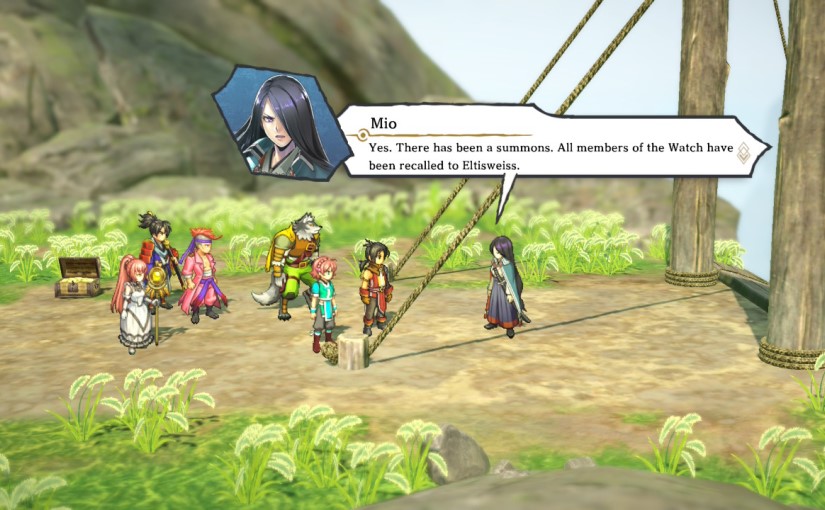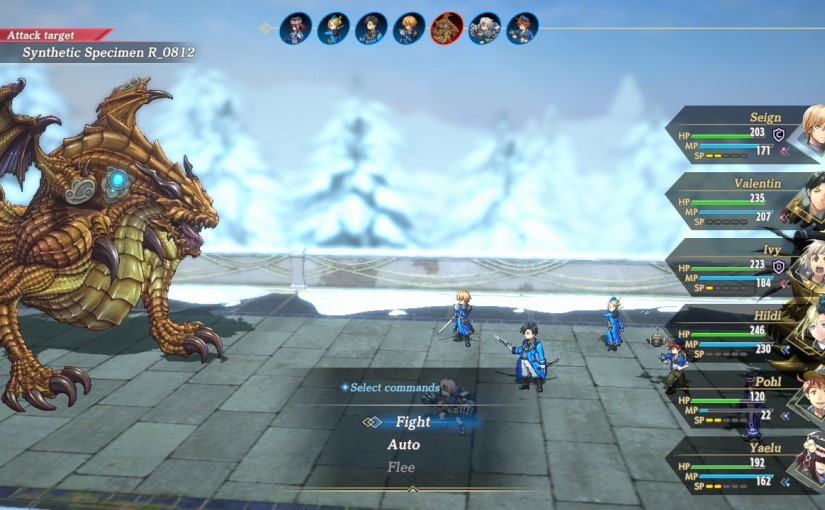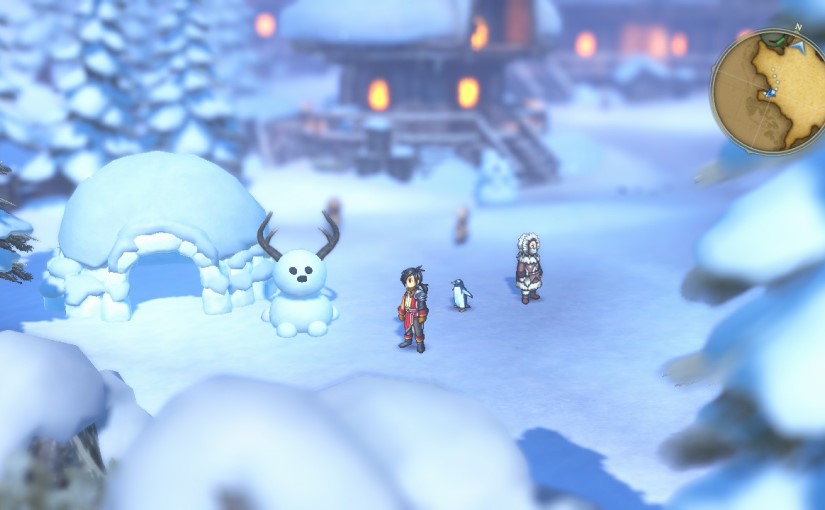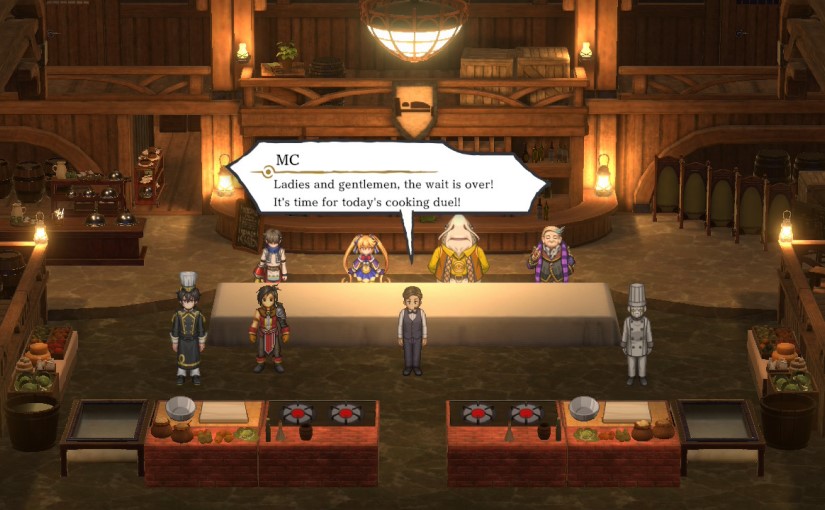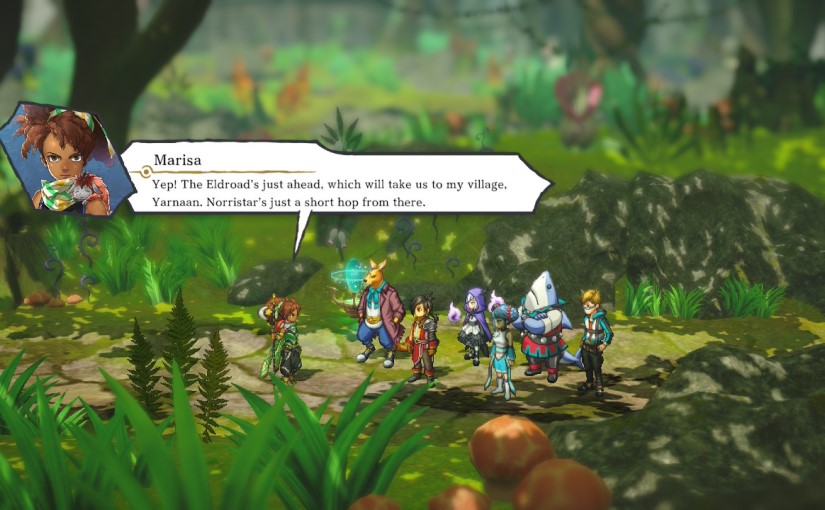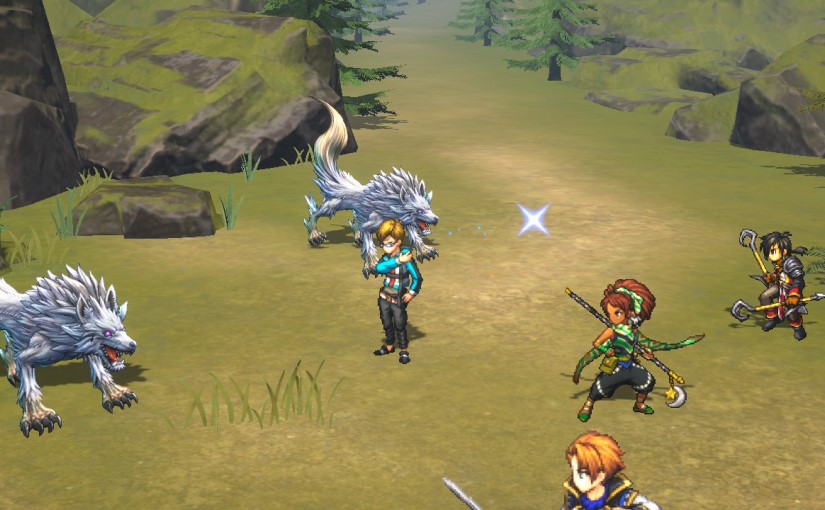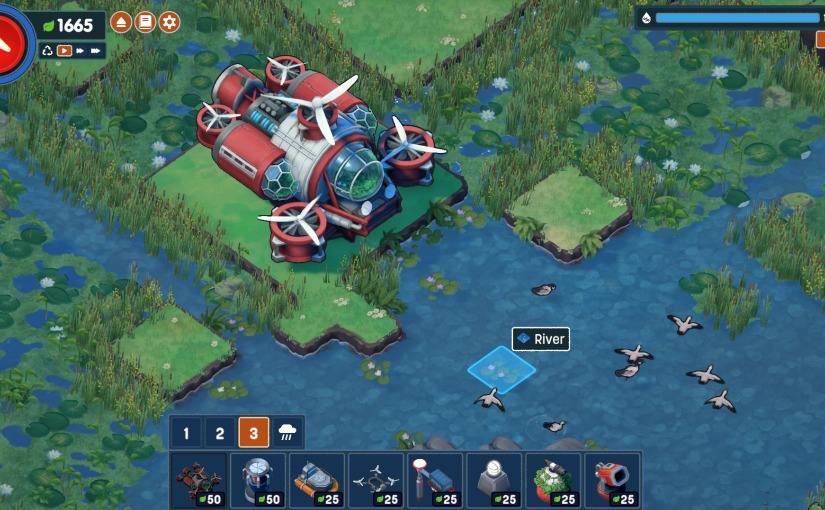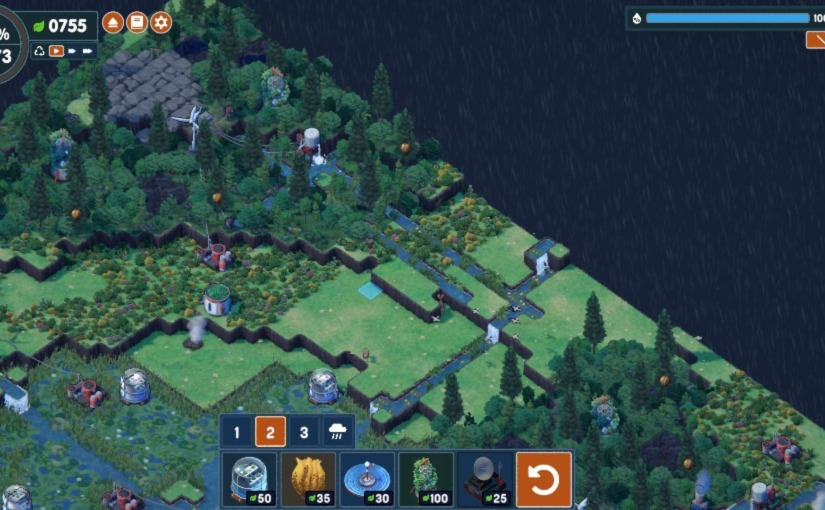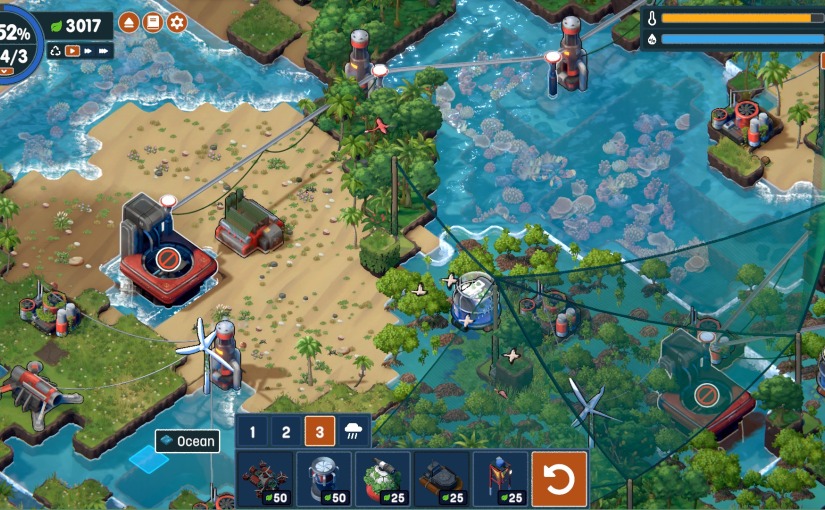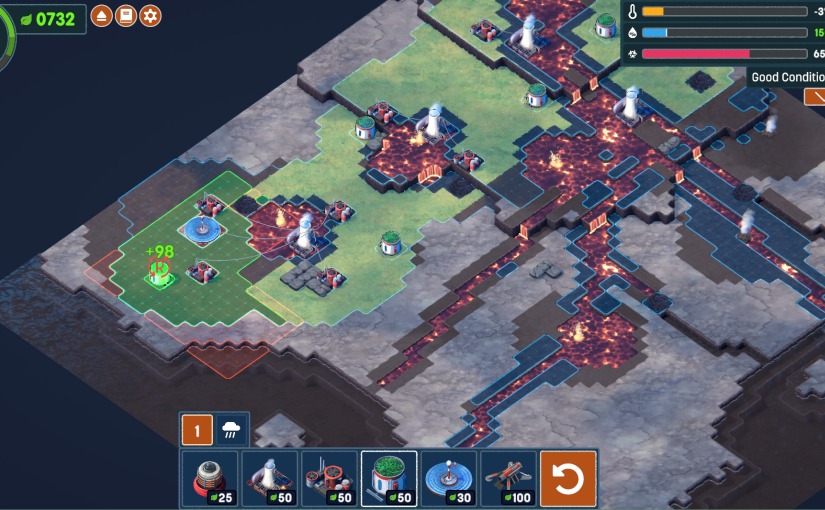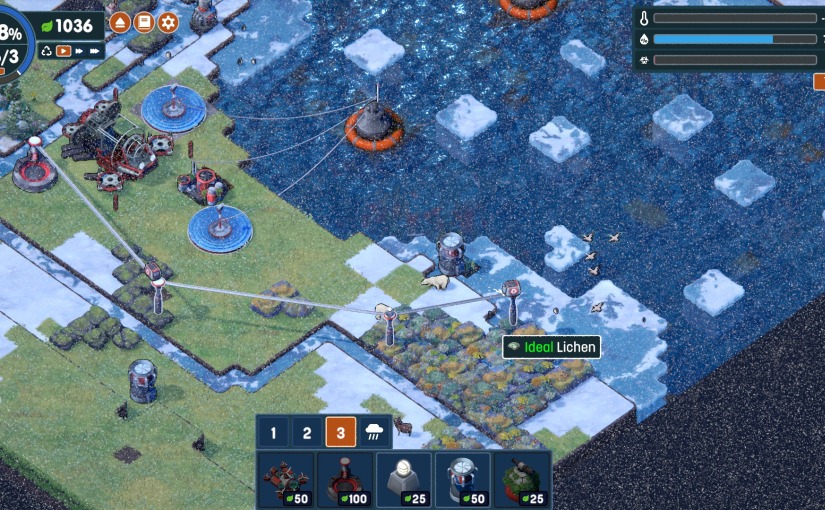In the midst of playing the sparkly and new Mario Kart World and getting addicted once again to the wonderful Dragon Quest Builders 2, I decided to start another game. The Precinct is an isometric cop simulator with an ’80s vibe and a story about a cop trying to live up to his dad’s name as well as figure out the details of the old man’s untimely death. It’s developed by a studio called Fallen Tree Games and was released across multiple formats. My daughter bought me the physical PS5 version for Fathers’ Day as I had expressed an interest while in a game shop with her a few weeks prior. A wonderful gift, I’m sure you’ll agree. I decided to start it today, and with it being something a bit different, I decided to make it the subject of a Game Diary! Would you like to come and apprehend some perps with me? Join me in my squad car, then, and don’t hit your head on the door frame as you get in.
Session 1 – 23rd June
Going into The Precinct I knew it was set in the 80’s, and as such, I was expecting to feel like Axel Foley, James Crockett, and Carey Mahoney all at once. The synth music while the game was installing was certainly a good start. I’m a total sucker for synthwave.
The game started proper and I was bathed in night-time city vibes dashed with neon and accompanied by saxophone sounds and synth beats. A voiceover (which sounded like it belonged to some kind of veteran cop) introduced me to Averno City, and told me that the cops are underpaid and overworked, and that plenty of them are crooked, and that they’ve all got targets on their backs.
The main character was introduced as Nick Cordell Jr., whose dad is a bit of a legend in the precinct who was murdered not long before the start of the game. The cut-scenes use still images but the drawings seem okay. The voice acting is a bit wooden but not too offensive, and I actually chortled a little at a bit of banter towards the end of the scene. It introduced five or six cops at once but none of them particularly stood out.
Nick was then let loose to walk around the station, and the isometric view is definitely interesting. I think it’ll take me a while before I stop trying to angle the camera and zoom in, though. Nick’s assigned partner, a guy named Kelly, doesn’t seem to want Nick around at first, but he turns out to be a bit of a joker and an okay guy who knew Nick’s dad. I bet he ends up being one of the crooked ones! Our first mission was to drive to a nearby hotdog stand and buy a hotdog. Nick was given the option of what to add to the hotdog and I made him choose “the works”. Got to roleplay a bit in these situations, you know?

Suddenly, there was a bank heist kicking off nearby. Nick put his foot down to get to a shoot-out outside the bank. The shooting gameplay seemed okay, if a little awkward to get to grips with, and then some of the bank robbers escaped out of another door and started driving off in a van. Driving slowly and legally is actually kind of easy (easier than it is in most games) but driving fast is a little harder, and there was a fair bit of collateral damage in the ensuing chase. We finally caught the perps at some kind of car repair shop, as after Nick had booked one and the chase had ended, we drove through the shop and the cop car got super fixed up in super quick time. So, yeah, we caught one of the bank robbers (they were wearing clown masks, because of course they were) and the rest ate a bullet or two.
At this point I was loving the vibe overall, mainly thanks to the music and my penchant for rainy city nights and neon reflecting on wet roads, but I think that the driving and shooting will take some getting used to. Either way, Nick’s first shift was over.
The next shift occurred during the day and introduced the cop’s handbook. While walking around the station at this point I did notice that sometimes a prompt comes up to talk to Nick’s fellow cops, but if you press the button nothing will happen about half the time. Just a little observation. We dealt with some parking violations next. Quite a step down from yesterday’s bank robbery. This appears to be an average policing day in Averno City. Vandals, hooligans, busy work, you know.
And suddenly, Nick found himself in a helicopter. Why are they letting him drive the chopper? He’s in the helicopter because everyone is really impressed with how he applied himself during the bank robbery, it seems, and he’s flying it because … gameplay? I don’t think he’s actually the one with the controls in-universe.

Anyway, the police work continued, including looking for speeders and tackling an old lady who made a run for it. I made a couple of observations here. Firstly, the walking animations are a little odd and jerky, and secondly, the NPC vehicle AI is kind of dumb whenever there’s a crash or a queue. Also, if you look too closely at the city, you’ll notice that the same store fronts and advertisement billboards are reused a lot and repeat quite close together. Don’t look too closely, okay!
Oh, and one more observation; the civilians who randomly walk around occasionally reference films of the era the game is trying to evoke with random quotes. I’ve noticed Scarface, Bladerunner, and Gremlins references so far.
There was a steel mill shout-out next, and it seems that The Precinct really wants to balance everyday police work with action movie stuff. We were investigating the August Gang at this point, the guys who did the bank heist, and there are two detective types involved, Ferrera and Li. No one is super memorable still, though. After the steel mill affair, Chief Jackson talked about Nick’s dad and how they never found the killer. I guess this’ll be the main focus of the story. Chief Jackson says that Nick’s dad would be proud. After this bit there’s a lingering drone-style shot of the city with a song that has vocals in it. We’ve opened up a new area called West Averno Bridges. The song was great, by the way.
Next up was our first day where we were left to go out on our own and patrol. You kind of walk around while the game regularly throws encounters at you, and you have to react to them according to the cop handbook. How much experience you get depends on how well you do, and it was pretty easy, although I did let a couple of criminals get away when there was more than one perp involved. Oh well, I’m sure they’ll see the error of their ways.

After this shift on the Chinatown beat I was introduced to a posh, British-sounding guy back at the station who was talking about some things that have gone missing. I didn’t catch what had gone missing exactly as I was checking the use by date on some salad dressing in real life. Yep, that’s right, it was time to go shopping. End of session one.
Session 2 – 23rd June
We started off this second session with an objective to investigate a suspicious object at a bank. It was a museum artefact in a case, a key to be exact. I don’t really know what’s going on with this quest line, I must admit. I was struck again by how awesome the music is, though.
On the way back from this minor call-out Nick, Kelly, and I caught a car-jacker and a litterer. The litterer took off at speed and ran down a civilian. He was also carrying counterfeit jewels. Book ’em, that’s what I say.
After that shift, the female officer in the white shirt mentioned an opportunity to go undercover in some illegal street races. This is an excuse to drive like a crazy bastard in a few locations around the city. We did a few of these and managed to win them all after a few tries. The races reminded me of an awesome video I watched on YouTube by Dungeon Chill about a super cool Japan-only PS1 game called Racing Lagoon. You should watch it. It’s here.

Some other miscellaneous things to report as Nick, Kelly, and me caused more damage around town; I witnessed another film reference, RoboCop this time. “I’d buy that for a dollar” someone blurted out randomly and without context. Also, I found that if you’re doing a foot patrol, it’s pointless responding to dispatches because you’ll never get to your car and make it to the crime on time. It doesn’t matter, though, there are always more crimes. Lastly, the gang we were investigating here is called the Crimson Serpents. It sounds like something from Cyberpunk 2077, which I’ve been very tempted to play lately.
Anyway, we chased a Crimson Serpents member, Weaver, to the top of a building, and an apparently crooked cop called Choi was talking to her. After a shoot-out with some gang members both Choi and Weaver were arrested, and Nick went into the interrogation room with Li to talk to Choi. Li’s voice actor was exposed a bit when he had to get angry here, but it’s okay. Choi protested his innocence but then started asking for a trade. Which is it, Choi? After this exchange, we were told we needed to start investigating the other gang known as the Lockjaws. Time for more police work!

I was winding down by this point as the wife had gotten home, but there were a few antics of note. One drink driver tried to make a run for it and Kelly tried to taze her but hit Nick instead. That was kind of amusing. I also got Nick killed for the first time while my wife and daughter were watching. A car-jacker opened fire during a chase and I made Nick get out of the cop car when we got close, resulting in him getting run over numerous times. Another car-jacker case just after this ended in chaos, too, with me not noticing that he’d pulled over and got out of the car and making Nick smash into him. He survived, though, and was promptly arrested. I’m starting to realise that The Precinct is a game of chaos, and I’m not sure it is entirely realistic. Fun though, I’m enjoying it more as it opens up and takes off the training wheels. Have I mentioned the music is really good? See you next session.
Session 3 – 27th June
Session three will be a quick one. I wanted to play because I haven’t found time in a while, what with work and life and stuff, but I didn’t have long before I had to head back out into the (currently very warm) outside world.
We chose to start off with the most exciting kind of shift; issuing parking tickets! Work and life got in the way in-game as well, though, as Nick only managed to issue one ticket for a parking violation and otherwise resolved a mugging, lost a car thief who thieved a car right in front of him, and lost the cop car so had to walk back to the station. He did a street race and a time trial on the way to the shift too. We got a gold time on the time trial, and while achieving this feat we smashed through lots of stuff that I’m pretty sure is designed to stop speeding cars, like traffic barriers and things.
On the way back from the shift we stopped into a bar to speak to an informant guy, but were called to a homicide scene by Ferrera. A grisly scene it was too, with a dead fellow covered in dollar bills and with his fists stuck in his mouth. We identified him as a guy involved in a Ponzi scheme. A Ponzi scheme! I recently learned what that is thanks to ambiguousamphibian, one of my favourite YouTubers.

We started the next shift, Nick, Kelly, and I, and I chose to go on another parking violation hunt, but my real-life alarm went off and it was time to go do real-life stuff. Those dastardly parking law violators will just have to get away with it for another day!
Session 4 – 27th June
This next short session began with a hunt for people who park bad. You know, bad parkers. It was amusing because we were ignoring car-jackings, muggings, and the like to concentrate on people who’d parked facing the wrong way on the street. I’m pretty sure that isn’t a crime here in England, by the way.

After this shift, we had to go and see Ferrera again, this time at the morgue. The guy who was killed was immobilised by a paralytic agent before the deed and was choked with cash. Nasty. Ferrera told us to get back to the murder scene to question the neighbours, but we had a perp in the car, so had to go back to the station first. When we did do the questioning, an old lady spoke to us through an intercom and said something about a white or nearly-white car.
Lots of miscellaneous police work followed this. Some highlights included Nick being shot by someone who was getting mugged while he was trying to arrest their mugger, and calling in an escort unit to take a perp back and watching them fly onto the scene in reverse in a battered cop car, disappear behind a building, come back onto the scene while knocking over a street lamp before disappearing behind another building, only for the cop to run around the corner moments later on foot. It was a very “don’t worry, everything is under control” moment. My daughter was watching at the time and we laughed heartily. Everything, from a car-jacking to a litter infraction, has a high chance of ending in absolute chaos in this game, and I like that very much. The NPC cops are wild.
The next shift was interrupted by another “stiff”, this time up on a rooftop. Ferrera was there again, and this victim was hanging upside down next to a rooftop narcotics plantation. Tied up with her plants, apparently. A Ponzi schemer and a drug grower – sounds like we’ve got a vigilante on our hands.

They’d have to wait, though, as it was time for me to take my daughter to her school disco. She wore a Lego Ninjago t-shirt and Pokémon jogging bottoms. Not big on dressing up, that one.
Session 5 – 28th June
This session started off with a chopper shift! Helicopter patrols, I guess somewhat unsurprisingly, feel kind of distant and disconnected. You fly around, spying on crooks from above, and deploying squad cars, foot cops, and stingers, and the NPC cops tend to put stingers in dumb places. It’s more fun being in amongst it, but flying the chopper is a cool vibe, nonetheless. You can’t crash it, though. At least it seems that way to me. It just seems to bounce off buildings or clip through them.
Following this airborne shift, Nick, Kelly, and I did a whole host of normal shifts. There wasn’t much in the way of story progression for quite a while, just arrests, a couple of races, and some general nonsense. We were building up evidence to investigate the Crimson Serpents and Lockjaws.
Eventually we got another call from Ferrera regarding a third stiff, this one found in a subway station. It’s related to the vigilante guy again, as this time it’s an extortionist who’s gotten himself the wrong side of our serial psycho. We also got all of the evidence for the next Crimson Serpents guy during this time, too, so that’s who we’re investigating next.
The next Serpent is called Popov, and the cops catch him thanks once again to Nick’s unlikely helicopter driving skills. In the interrogation room Popov is a bit of a jerk about Nick’s dad. What a jerk! Li sends Nick out of the interrogation room so that he doesn’t have to listen to a gangster be a jerk about his dad.

More shifts followed, and I saw a random civilian say “eat my shorts, man”. That’s a reference to a quite obscure TV show called The Simpsons. This TV show debuted in 1989, apparently, so I’m guessing this person was a time traveller.
Following our encounter with this anachronistic malcontent, Nick, Kelly, and I finished our shift and found that we had enough evidence to go after the first Lockjaw suspect. It’ll have to wait, though. I’ve been playing for a while, and it’s really, really warm at the moment. Time for a rest.
Session 6 – 30th June
We went after Viper Vega of the Lockjaws to start off this session. He sounds like a Rock ‘n’ Roll Racing character, but apparently he’s in a band called Caviar Lockjaw, who are something to do with the gang. They had been mentioned before but I’d kind of forgotten about them. This is starting to feel a little bit like that early mission in RoboCop: Rogue City, though, with the punk gang and the band.
We saw a parking violation on the way and stopped the car to hand out a ticket, but the game doesn’t seem to let you do such things when on the way to a story mission. The prompt comes up, but nothing happens when you hold the button. That dastardly curb parker will just have to get away with it.
When we found Vega he looked like a member of that gang from the RoboCop game as well, but we didn’t get a concert. Also, a gruff Cockney voice didn’t really go with his name or vibe. Anyway, we booked him after a short shoot-out.
Nick, Kelly, and I embarked on a regular shift after this. It started out with some guy randomly shooting at us from his car window. We killed him (lawfully) and then got a call from an anonymous tipster about a phone booth near the hospital. It turned out to be the serial killer vigilante guy with a voice changer and he (or she) sent us off on a wild goose chase around the city. I didn’t mind, though, because it was quite fun to drive fast with the sirens on without having to chase someone. This escapade was all dressed up as an opportunity to save his next target, but when we got to the goal there was just a hanging crash test dummy at the docks. There was a card with a pattern on it there. I haven’t been mentioning these cards, but they were left at all the murder scenes. Nick arranged them into a scales of justice emblem. Well done Nick.
Another normal shift followed after this. It was quite a long one with lots of arrests made for various infractions. A particular highlight consisted of getting shot at by a couple of Lockjaw gangsters, arresting one straight away, and then commandeering their own van to chase down the other one and shoot him dead. He had it coming.

Just before packing it in for this session we encountered another random NPC spouting another random film reference. “Here’s Johnny!” he said. Who just randomly blurts that out while walking through a dark alleyway in the middle of the night? Crazy people, that’s who. Should have arrested him.
We’re pretty close to gathering enough evidence to go after the next Lockjaw and the next Crimson Serpent, so I expect we’ll be doing that next session. See you then!
Session 7 – 2nd July
This was my first session on The Precinct where I wasn’t melting from the heat. We’re having a very hot spell here in the South-West of England. I’ve still got the back door wide open even now, but there’s a nice breeze coming through. Nick, Kelly, and I did some general shift work and I had a few observations. Firstly, I spotted a guy with a “repent your sins” sandwich board thing, which was cool and definitely appropriate for the era. Secondly, whenever you get in the car and drive off, there’s a little notice that comes up saying “wait for Kelly”, but you don’t have to wait for Kelly, you can drive off and leave him alone, and he’ll magically be in the car if he needs to be for gameplay or story purposes. It’s just as well since half the time he either stands around or runs off somewhere. Lastly, loads of people in Averno City seem to have the surname, Bosson. Must be a big family.

Anyway, after this shift we went after the next Jawhead, Aggro Annie. Yes, I said Jawhead, not Lockjaw. I’ve been getting the gang’s name wrong this whole time. I must have got the gang and the band mixed up. We nabbed Annie with our helicopter powers after she and her pals blew up some billboards. I must admit I’m only half paying attention to the dialogue a lot of the time now, so I’m not sure exactly why she was blowing up billboards. Probably a political statement.
During our next shift we got called back to the docks to see if there were any leads regarding the crash dummy thing. We got a plate on the suspicious white car, and it belongs to a lawyer! We went to see him. His name was Fletcher Lomax and he was basically an American Psycho reference with a definite Christian Bale vibe. On the way to his house I spotted a billboard for something called a HAL 9000 computer as well. 2001: A Space Odyssey has got to be one of the most referenced movies of all time.
After another standard shift with all the usual antics and chaos and, I have to admit, jank, we went after Wong, the head of the Crimson Serpents. After a shoot-out we caught him down by the docks and locked him away. He ain’t talkin’ though.

We then got another call from Ferrera to check on a former client of Lomax, and caught him in the act. He drove away and there was a short car chase. The squad car we called as back-up rammed him off the harbour wall and into the ocean, and then drove into the drink with him. These CPU controlled cops are insane bastards. Luckily, both the cop and Lomax managed to swim to the surface. Nick caught Lomax when he climbed a nearby ladder back onto dry land. He is in jail now. He thought he was a hero. Thus ends another night of absolute chaos on the streets of Averno City. This game is so broken, but I kind of love it for that. Some of the time, at least.
Session 8 – 7th July
I’ve had my birthday since the last session, which means two things. One; I’m slightly hungover. Two; I have a couple of new games I want to be playing, so let’s get this one ticked off, yeah?
Session eight started off with shift work. The only thing of note was when the shift ended and the cop car was too far away so Nick broke into a civilian vehicle and used that to drive home. We also managed to get the gold time in a really tricky waterside time trial.

Time to get down to business, though, as we’re going after Razor next, the top man of the Jawheads. This, as seems to often be the case, boiled down to a rooftop shoot-out followed by a car chase. It was only during this exchange of ammunition that I figured out the reload button. You have to tap the button that you hold to put the gun away. I don’t think the game ever mentioned this.
Once we’d put Razor away Nick was called in by Chief Jackson. At first the game was trying to trick me into thinking Nick had to investigate Kelly behind his back, but it was just a secret mission to get a cake for Kelly’s retirement party.
I had to pause the session here, as it was time for lunch (salad) and some birthday cake. Life imitating art, you might say. Once the session was back in … session, Nick and I drove to Kelly’s party, and I saw a Blue Harvest neon sign. That’s a reference, right? Something to do with Star Wars? Anyway, Kelly gave a nice speech at a rooftop bar, but the cop who works in the evidence office wanted to talk to Nick, and it turns out he found a letter addressed to Nick from his dad. Nick bailed on the party to go back to the station and read it, and it implied that the Chief knew more about Nick’s dad’s murder than he revealed. Unfortunately, the Chief came back and caught Nick snooping around. Now we’re in trouble.
After being sent on parking infraction and littering duty as punishment, Nick and Kelly decided to look into Chief Jackson, and caught him talking to Antonio, the informant guy we’d been speaking to at the pub to get information on the various gangsters. Nick went into a warehouse to follow the Chief, but Antonio was waiting, and bonked him on the head. Nick woke up tied to a chair and Antonio revealed that Nick’s dad and the Chief were on the take. He was going to kill Nick but Kelly busted in and saved the day. It turned out that Antonio was in charge of the August Gang, and with the Jawheads and Crimson Serpents out of the way (mainly thanks to Antonio’s info) the August Gang could get to robbing again. Another bank robbery was reported, and it was time for another shoot-out.
About halfway through this shoot-out Nick and Kelly caught some radio chatter between Antonio and the Chief, and for some reason that I kind of missed they’re on top of the bar we’ve been meeting him in. Nick and Kelly totally bail on the bank robbery shoot-out and go after Antonio and Chief Jackson instead. Another rooftop shoot-out ensues, and Antonio was a bit of a bullet sponge, but Nick took him down in the end, and he flew off the side of the building like a ragdoll. Entertaining.

With the Chief safe, he spilled the beans that he and Nick’s dad aided Antonio in exchange for dirt on all the top gangsters because they were underfunded, and told Nick about a secret safe in his office that had evidence that would blow the whole thing wide open. The game then gave Nick, and by extension, me, a choice. Would we destroy the evidence and save the department’s reputation, or publish it? I believe that, in the long run, honesty always turns out to be the best policy, and I feel like Nick would do the same, so we drove all the way to the news building and gave the evidence to the sexy journalist, Bree Bookman. Then, Nick went back to work.
Cue the end credits, along with some nice music, and a night-time flyover of the city. I didn’t expect to be finishing The Precinct today, but here we are at the end. A little epilogue revealed that they removed Nick’s dad’s monument, and then there was a short scene introducing the new chief, Yasmin Singh, and a quick reveal that Kelly is un-retiring. He better pay me back for that retirement cake.
Honestly, The Precinct is such a broken game. When you bring a perp back to the station to be booked, the cop who comes to put them in the holding cell cannot do so without walking into things and getting stuck on things. When cops come to pick up perps you’ve arrested out in the city they will park really far away, take ages to walk over to the criminal (if they make it at all) and then stand around doing nothing after they’ve put them into the car. Kelly will often run off instead of getting into the car when he needs to. The Precinct provides the facade of a functioning city, but the simulation doesn’t stand up to even minimal scrutiny.
There are other issues, too. The shift work can get repetitive, and you’ll find yourself ignoring certain crimes because they’re just outside your patrol area or because they’re not specifically the type of crime you’re looking for that day. This might all be a big statement on the state of real policing, but I wouldn’t know, and it kind of breaks the immersion.
Still, during the story missions, or when a car chase breaks out and hilarious chaos ensues, or even when you’re just cruising around the city in the rain with the lights reflecting on the road and the synthwave soundtrack carrying you along on blissful, neon waves, The Precinct is a lot of fun. It comes highly recommended for lovers of justice, chaos, and the eighties who are capable of tolerating a lot of jank.

Well, that’s the end of this game diary. I can go back and do shifts and earn XP and things, but if I do I won’t write about it. Thanks for reading what I did write, though, citizen. You’re free to go now.
